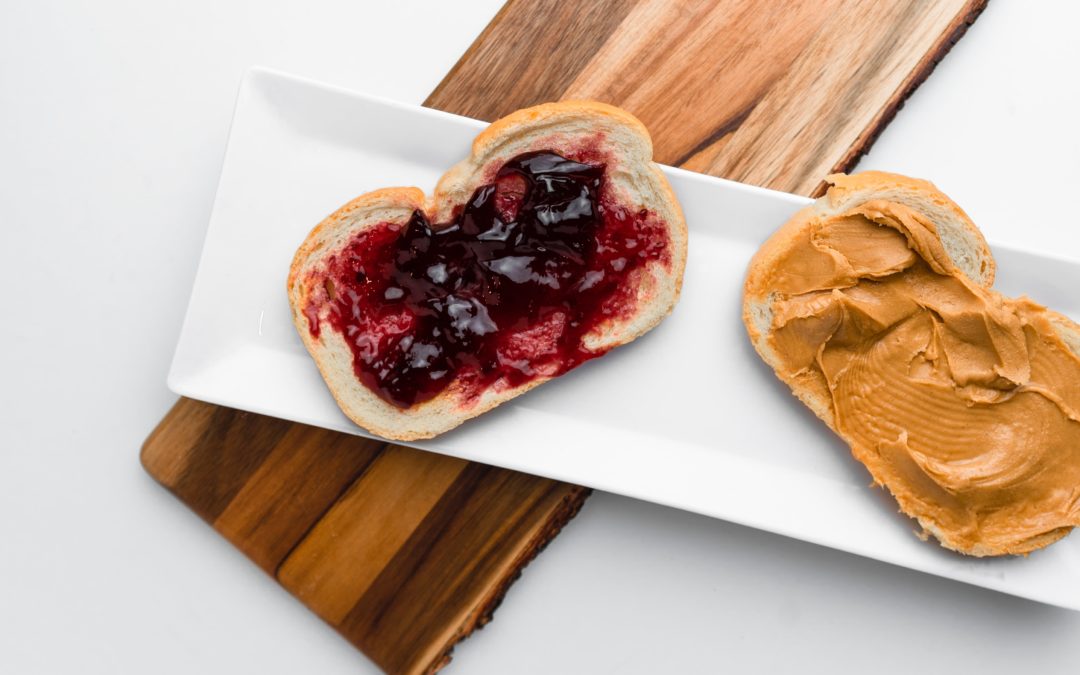an immigrant cultural experience
On Peanut Butter
I love peanut butter with just about every food combination, however, the absolute best pairing is an all-time favorite, the PB&J sandwich. My early childhood in México did not include peanut butter. I did not know about it and had never heard of it, or its flavorful food pairings.
The origin of peanut butter is older than me, it was first introduced as a food alternative in the form of peanut paste by Dr. Ambrose Straub. According to the National Peanut Board, Dr. Straub handmade the paste for his geriatric patients experiencing trouble chewing or swallowing. Later Dr. John Harvey Kellogg patented the process of making butter out of peanuts and by 1904 partnered with a food company to develop the peanut spread. The St. Louis World Fair introduced it to the public, which then popularized this alternative to dairy butter. However, in this early chapter of peanut butter, it was considered a delicacy and exclusive to the privileged able to purchase it in tea rooms.
Thanks, again, to the US Veterans of WWII, the peanut butter and jelly sandwich was introduced as part of the ration menu. The soldiers brought back the PB&J sandwich to their households after the war, and the rest is history. Everyone loved the ease of making the PB&J sandwich, as well as knowing that peanut butter is high in protein and has a lasting shelf life.
On Free/Reduced Lunch in Public Schools
The transition of an immigrant young student may be difficult, yet possible, for some. For others, it can be traumatic. As mi mamá transitioned my sister and me into US public schools, she learned of the National School Lunch Program, which provided free and reduced breakfast and lunch meals to those families that qualified. Today, the NSLP “plays a critical role in the healthy development and long-term health and educational outcomes for low-income children.” Our single-parent family qualified for the program, immediately changing my family’s custom of eating our daily breakfast together, a custom that I held dear* as a burgeoning foodie.
* I’ll share my favorite breakfast routine in a future post.
The school breakfast menu regularly consisted of oatmeal, milk, orange juice, and half of a banana. On occasion, the menu offered eggs and bacon, and on surprise occasions, a variety of children’s sweet cereals. I wasn’t fond of regular oatmeal, and continue to avoid it still. Sometimes runny, sometimes lumpy, students were made to eat everything on their trays before exiting the cafeteria. I sat there all morning until the bell rang and was obligated to clear my tray in haste and hurried to class. I quickly outwitted the cafeteria trash monitor by finishing my milk and using the container to hide the oatmeal, demonstrating a clean tray.
There were only a few students for breakfast, all with similar social statuses. Lunch was a different story. At lunch, whole grade-level classes ate together in the cafeteria, with students on free lunch, reduced lunch, and paid lunch, as well as those students lucky to bring their homemade lunches. This was when the social dynamic among students became difficult and, at times, traumatic and stigmatizing.
The Ford Foundation, in partnership with New York’s Community Food Advocates, writes about an initiative to offer Free School Lunch for All. This bold movement is steadily growing across the nation to lessen the free lunch stigma that, “despite their need, one in three eligible students skip lunch to avoid the shame.”
On Free/Reduced Lunch and PB&J Sandwiches
It was in middle school that I was introduced to the PB&J sandwich. By then, I had been begging mi mamá to allow me to make my homemade lunch to take to school. All of my friends took their homemade lunches, and I stood out like a sore thumb by getting in the free lunch line. How a prayed to be like mis amigas. One of which regularly took a yummy PB&J sandwich, made with creamy peanut butter and grape jelly on white bread. I was hooked!
By 8th grade, I started to sneak into the kitchen at night to make a PB&H (peanut butter and honey) sandwich to take to school. I replaced the jelly with honey as jelly was not an item in the food packages supplied by the Special Supplemental Food Program for Women, Infants, and Children (WIC). The peanut butter and bread were my favorite items in those food packages, the cheese was less desirable. I grew up visiting the dairy farm of Tío Valentín in Villa Matamoros, México, and favor the mouth-watering fresh milk, cream, and cheese, that nothing else compares.
Finally, at age 13 I discovered the joy of peanut butter and PB&J sandwiches, and have expanded my pairings ever since. I am grateful for the social programs that helped nourish my immigrant childhood, ensuring that the basic needs of our family were met in our transition to the US culture, as well as sparking the development of a foodie’s palate.
Positively, in one generation, my immigrant mamá was able to raise, feed, and educate three children that benefitted from various social programs and are now successful professionals and parents. Today, I may not need the support of social services to raise, feed and educate mis hijos, however, I, in turn, support organizations that provide such immigrant assistance.
NOTE: To learn more about the Healthy School Meals for All movement visit the Food Research & Action Center website. I also encourage you to visit the links of the various social programs mentioned in this post.

